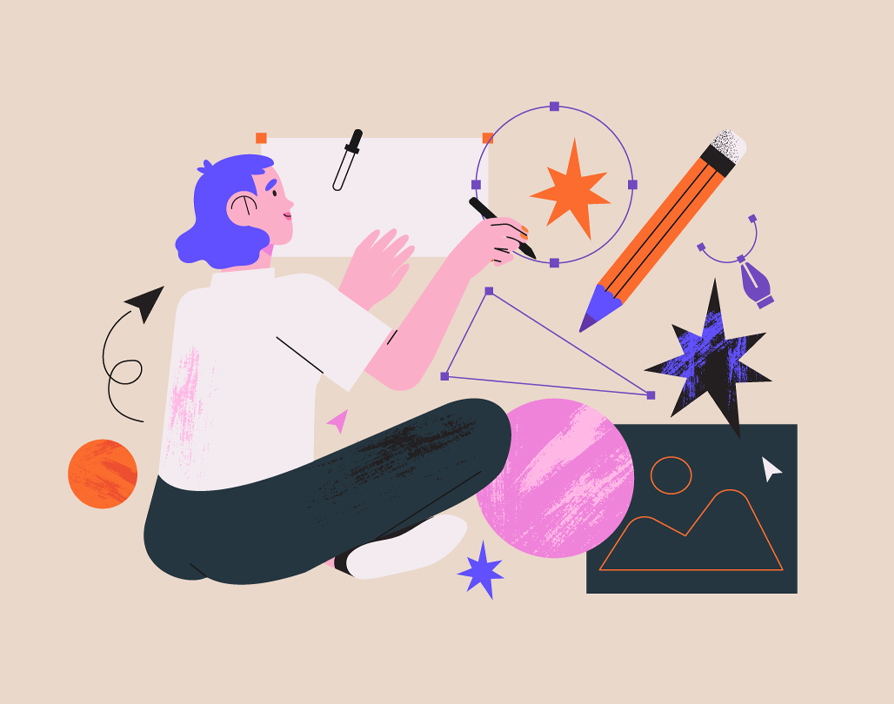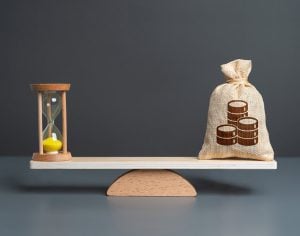This week a prospective client came to us wanting a new brand designed for a service in the EV sector. It would be appearing in multiple situations across hundreds of retail outlets. Their budget was £8,000. Approximately five times that could get you the absolute minimum needed; ten times that would be the budget it deserved.
This is not uncommon. I expect some people reading this will think £80,000 is a bit rich for a logo, after all, a graphic designer could knock that up in an afternoon, couldn’t they? Yet those same people make thousands of decisions based purely on their perception of a brand identity; from choosing between a leaping jaguar or a three-pointed star when they are buying a £60,000 car, to choosing between a red or blue can of £1 cola. When Pepsi changed from red to blue to differentiate from their red rival, they really appreciated the power of design, so much so they paid to have a Concorde painted blue to promote it.
The same is true of product design, as it is identity design. Most people are simply unaware that the cup they drink out of, the kettle they boil or the tissue they blow their nose on was not just engineered, but also designed. The cup requires ergonomics and aesthetics as well as structure and the ability to hold liquids. The kettle needs to be intuitive to use and look good in your kitchen and the tissue needs to be easily unfolded and used, and comfortable to the skin. Often, good design is invisible. So much so, we don’t appreciate what goes into making it that way. It so seamlessly fits into our human lives that we barely notice it. Yet, poor design almost certainly gets noticed. From the packet you can’t open to the cheap, but unfathomably complicated electronic device that forever has a 12:00 flashing time display. We’re hyper-aware of design imperfections.
The huge cost of setting up production and supply chains seem justifiable with the activity and physicality of their development: from the machining of tools and construction of manufacturing lines to the lorries and warehouses and staff required. Design on the other hand is all handled in the studio and in the minds of the designers. Some well-known designers perpetuate this mysterious process turning it into some sort of alchemy that only they can wield. This may build up their individual fame, but it does little to help the cause of design. In reality, design is strategically and logistically complex. Creativity is not random, but it is the utilisation of wide-ranging skills, techniques, knowledge, and information that result in an intricate web of decisions. The result is often simple and elegant, belying the complexity that went into it. Leonardo Da Vinci said that simplicity is the ultimate sophistication.
There is also a misconception that design starts with a brief. I can’t remember the last time we kicked off a project with one. We always start with a business challenge or opportunity, then explore how design would best be used to solve a problem and maximise its potential. Strategy or planning is often seen as separate from design. It is not. All design has a strategic, creative, development and implementation phase. Again, as the strategic phase is more cerebral and the later phases more tactile, it is often seen as having less value and overlooked. Yet it is in this phase that many critical decisions are made that increase the chances of success, making for a more efficient development process, saving time and money in the long run. We recently embarked on a very large redesign project which inevitably had a large budget attached. Our client decided to skip the strategic phase to trim the budget, but I am convinced it was added on threefold in later stages without its lack of focus on the direction the work should take.
Designers sit in a unique space between technology and people. We design the interface between the two, whether that’s the seat of a plastic chair fitting a bottom or some soup packaging communicating its processed, yet natural, ingredients. We therefore need to understand hard technology such as injection moulding, or pasteurisation, to accommodate or communicate this in our designs. We also need to understand the soft human subjects such as semiotics, ergonomics, and behavioural sciences so we can engage our users. We also need to orchestrate the visual and visceral world through colour, form, shape and movement to make it all work. Not so simple, after all.
Our clients, as managers and marketers, are clever and experienced people who deal with the many complexities of their worlds from production efficiencies to sales figures. So, the assumption is that they should be able to get to grips with design quickly and easily, because it’s simple – isn’t it? With their swaggering confidence we assume they know about design, we start talking in tongues, and that’s where the problems start. A lack of alignment results in misunderstandings, often around budgets, which results in poor relationships, poor business, and of course poor design.
My advice is never make assumptions on either side. As a client, ask your design agency to talk you through their process before you brief them. Not all agencies are the same and I am sure they will be delighted to do so. Then you will know what’s involved, where your money will be spent and why it is valuable. As a design agency I suggest you gently quiz your prospective client about their experiences in design to gauge their understanding of your world. If it seems a little hazy don’t just give them a glittering display of past work to dazzle them, but ask if they would like a detailed walk through of your approach to give them clarity. An informed client is far better to negotiate budgets with than a clueless or perhaps even a prejudiced one.
“
Share via:









































